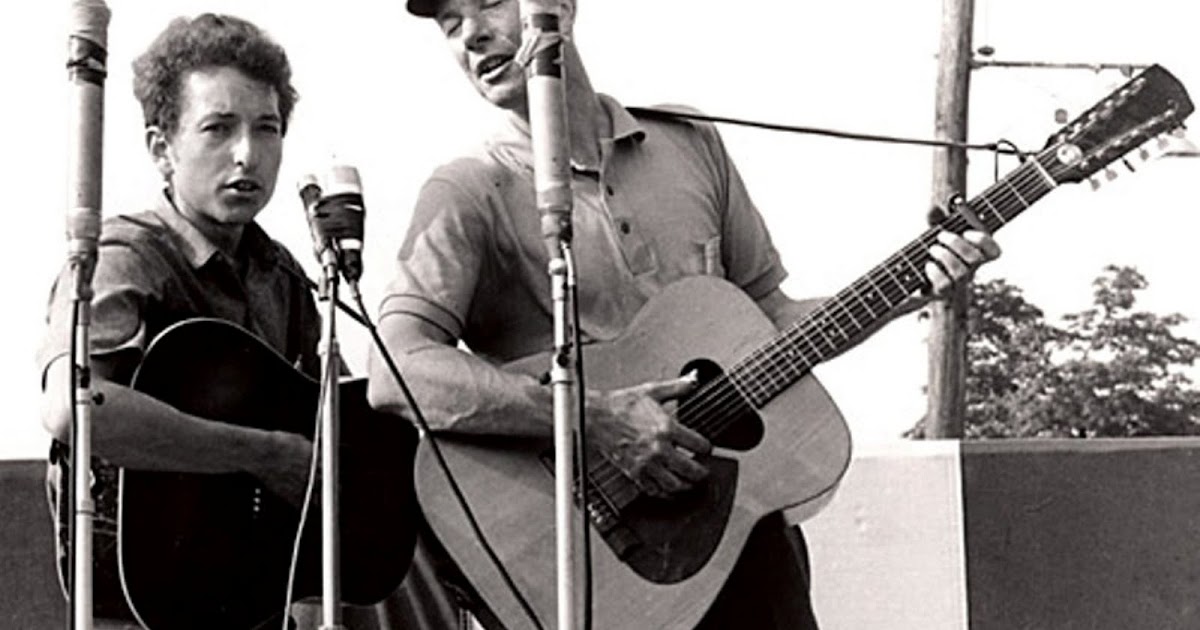Are Bob Seeger And Pete Seeger Related?

The world of music is rich with stories of family ties, shared legacies, and artistic influences. Among the many names that have graced the industry, Bob Seger and Pete Seeger stand out as iconic figures in their respective genres. Bob Seger, a rock musician known for his anthemic hits in the 1970s and 1980s, contrasts sharply with Pete Seeger, a folk musician celebrated for his activism and traditional American music. This brings up an intriguing question: are Bob Seger and Pete Seeger related? This article will delve into their backgrounds, careers, and the connection—or lack thereof—between these two legendary musicians.
Quick Info Table
| Feature | Bob Seger | Pete Seeger |
|---|---|---|
| Birth Year | 1945 | 1919 |
| Genre | Rock, Heartland Rock | Folk, Americana |
| Key Hits | "Night Moves", "Old Time Rock and Roll" | "Where Have All the Flowers Gone", "This Land Is Your Land" |
| Activism | Limited public activism | Prominent activist for civil rights and environmental causes |
| Influence | Influenced by rock and roll giants | Influenced folk music globally |
Backgrounds of Bob Seger and Pete Seeger
Bob Seger: The Heartland Rock Icon
Bob Seger was born on May 6, 1945, in Detroit, Michigan. He rose to prominence in the 1970s with his powerful rock anthems that captured the essence of American life. Seger's music is characterized by its relatable lyrics and a sound that blends rock, folk, and rhythm and blues. Some of his most famous songs include “Night Moves,” “Old Time Rock and Roll,” and “Against the Wind.” His career spans over five decades, and he has sold millions of records worldwide, making him a staple of classic rock radio.
Seger's background is rooted in the working-class culture of Detroit, which heavily influenced his songwriting. His themes often revolve around the American experience, love, and nostalgia, resonating with listeners across generations.
Pete Seeger: The Folk Legend
In contrast, Pete Seeger was born on May 3, 1919, in New York City. He became a pivotal figure in the American folk music revival and was known for his dedication to social justice and activism. Seeger's music often carried messages about civil rights, peace, and environmentalism. He is best known for songs like “Where Have All the Flowers Gone” and “This Land Is Your Land,” the latter being written by Woody Guthrie but popularized by Seeger’s performances.
Seeger's commitment to activism was deeply intertwined with his music. He participated in numerous movements, advocating for civil rights and environmental causes. His legacy extends beyond music; he inspired generations of musicians and activists, leaving an indelible mark on American culture.
Are Bob Seger and Pete Seeger Related?
Despite sharing a last name and a passion for music, Bob Seger and Pete Seeger are not related. Their surnames are coincidental, and their family histories do not intersect. Bob Seger’s lineage traces back to a working-class background in Michigan, while Pete Seeger was born into a family with a rich musical heritage, including his father, a musicologist, and his mother, a concert violinist.
The Importance of Their Distinct Legacies
Although they are not related, both musicians have significantly impacted American music, albeit in different ways. Bob Seger’s contributions to rock music have made him a household name, while Pete Seeger’s influence on folk music and social activism has created a lasting legacy that continues to inspire artists and activists today.
Musical Styles and Contributions
Bob Seger embodies the heartland rock genre, known for its relatable storytelling and anthemic sound. His music often reflects the experiences of everyday Americans, which has helped him connect with audiences on a personal level. For instance, his song “Night Moves” captures the essence of youthful romance and nostalgia, making it a timeless classic.
On the other hand, Pete Seeger is synonymous with the folk music movement. He introduced traditional folk songs to a new generation while also creating original works that addressed contemporary issues. His song “If I Had a Hammer” is a prime example of how he used music as a vehicle for social change, advocating for justice and equality.
Influence and Legacy
Bob Seger’s Lasting Impact
Bob Seger's music has influenced countless artists across various genres, from rock to country. His ability to blend rock with storytelling has set a standard for many singers and songwriters. Artists like Bruce Springsteen and John Mellencamp often cite Seger as a major influence in their music. Seger’s relatable lyrics resonate with listeners, making him a staple in the classic rock genre.
Pete Seeger’s Enduring Influence
Pete Seeger’s impact is equally profound, extending beyond music to inspire social movements. His commitment to activism through song has encouraged many musicians to use their platforms for advocacy. Seeger’s work has inspired entire generations, including artists like Bob Dylan and Joan Baez, who have carried the torch of folk music and social change. His dedication to environmental causes led to the founding of the Hudson River Sloop Clearwater, an organization focused on environmental education and advocacy.
Conclusion
In conclusion, while Bob Seger and Pete Seeger share a passion for music, they are not related. Their distinct backgrounds, musical styles, and contributions to American culture highlight the diverse landscape of music. Bob Seger’s heartland rock anthems capture the spirit of American life, while Pete Seeger’s folk songs serve as powerful tools for social change. Their legacies remind us of the importance of music in both personal expression and collective activism.
As we reflect on their contributions, it becomes clear that music has the power to connect us, inspire us, and drive change. Whether through Seger’s anthemic rock or Seeger’s poignant folk songs, both artists have left an indelible mark on the musical landscape, proving that while they may not be related by blood, they are united in their love for music and their impact on society.



Comments ()